
The items featured in this post were originally intended to be on display in the Reading Room of Antiquarian Hall by way of noting the Super Bowl. But the Curator of Graphic Arts instead installed archival items relating to the upcoming Leap Year in February. This is probably more fitting as, statistically speaking, Leap Year has seen fewer appearances on the calendar in the past decade than the Patriots have been contenders for the championship. And though last night didn’t work out in their favor, it may help to put the game of football in a historical perspective to ease the blow.
Football is arguably a game about reminiscences – a contact sport undoubtedly – but you’ll be hard-pressed to find anyone who enjoys the game who is not quick to reveal their earliest memories of encountering it. What better place to help alleviate the burden of recollections than in an archive?
So sit back and enjoy the visual post-game show.
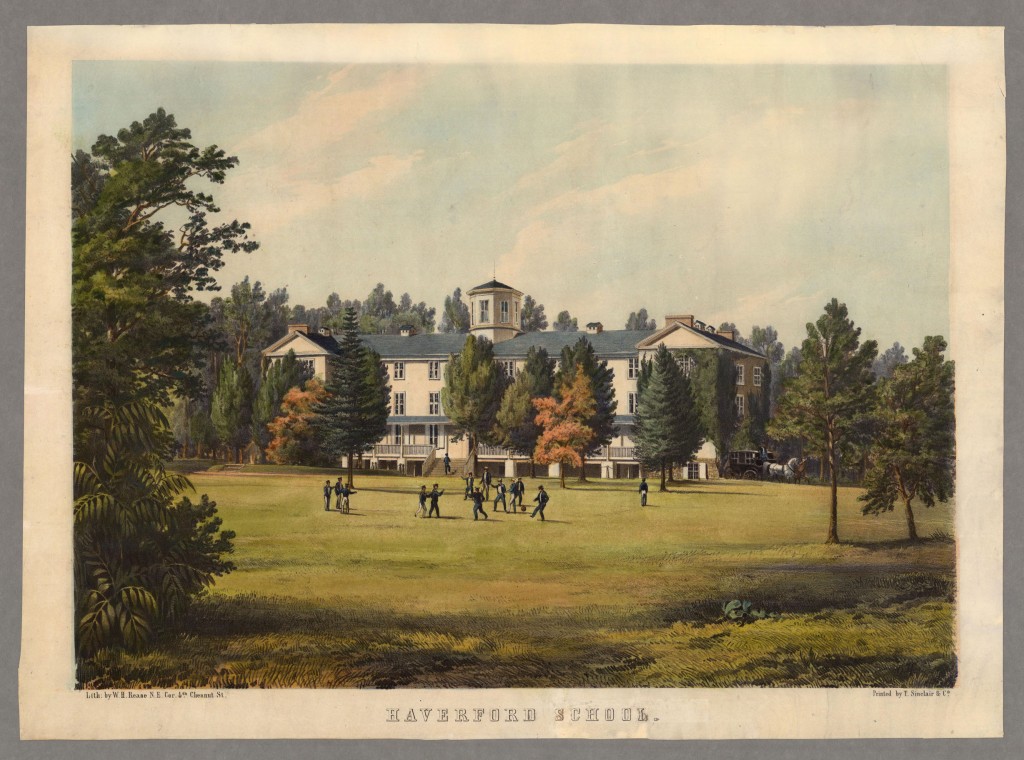

While the true game of American football as we know it today did not make an official appearance until the late 19th and early 20th centuries (alas, out of the AAS scope date of 1876), we certainly have items concerning its early history. British children’s author Thomas Hughes’s Tom Brown’s School Days, enormously popular in the nineteenth century, was recalled constantly as an introduction to Rugby. AAS has not one, but two copies of School Days at Rugby published in Boston by Ticknor and Fields 1857. Also in this vein of early depictions of the game from the late 1850s and early 1860s is Haverford School, a lithograph by W.H. Rease depicting a group of young men playing a game remarkably close to football; the men are outside what is now Haverford College in Haverford, Pennsylvania (Figure 1).
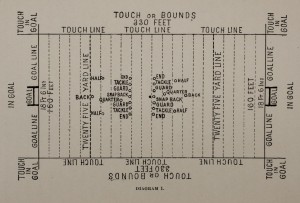
Walter Camp’s Book of College Sports, published in New York in 1893, offers an impressive overview of the history of the game as well as rich interior illustrations by Henry Alexander Ogden (1856-1936) and Irving Ramsey Wiles (1861-1948), in addition to diagrams, regulations, strategies, descriptions of costumes, shoes, and players (Figures 2, 3, 4).
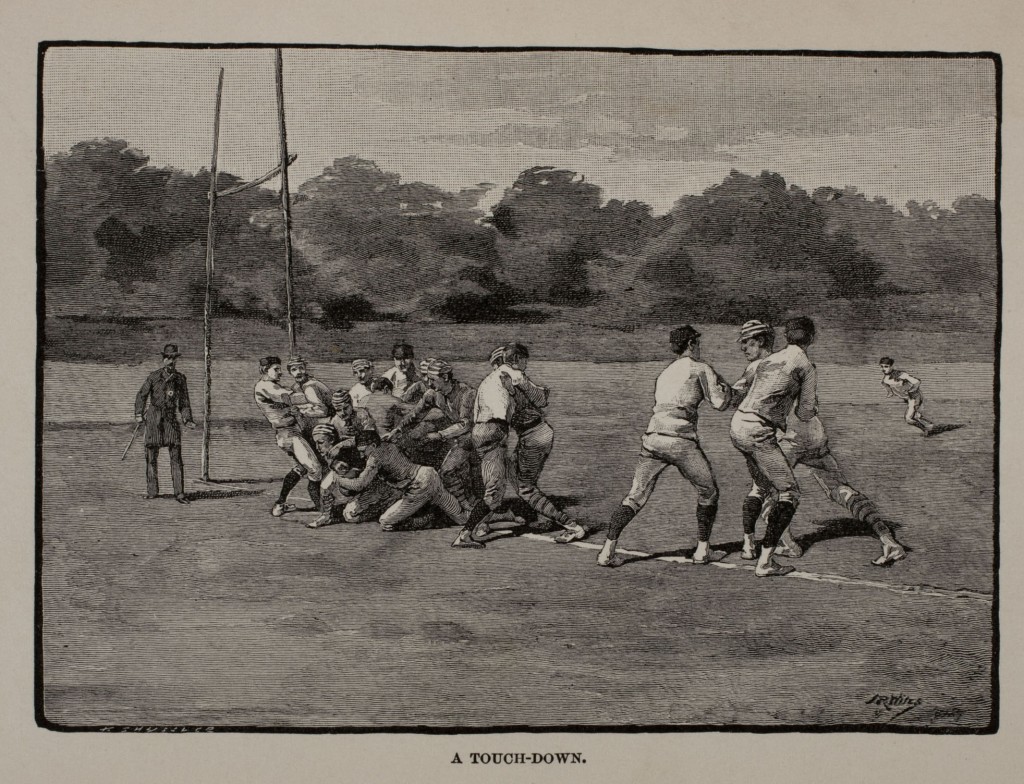
Camp’s text American Football: with thirty-one portraits, published by Harper Brothers in 1891, illustrates the sport’s most outstanding figures on the field in the late nineteenth century including the player (and later coach) Hector Cowan (Figures 5 & 6).
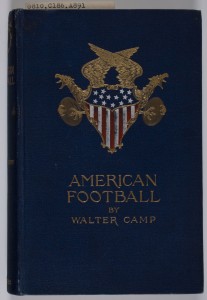
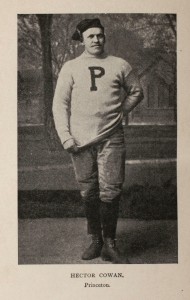
Football for Player and Spectator, published in Ann Arbor, MI in 1905, is a heavily illustrated guide to the game with more photographic depictions than Walter Camp’s Book. The author, Fielding H. Yost, was both a player and coach; in his preface, he states that his hopes are that:
The perusal of the work will give the reader – player or spectator – an adequate idea of the spirit in which the game is both played and viewed in its best form.
Following are rules, development, formations and diagrams of play (Figures 7, 8, 9).


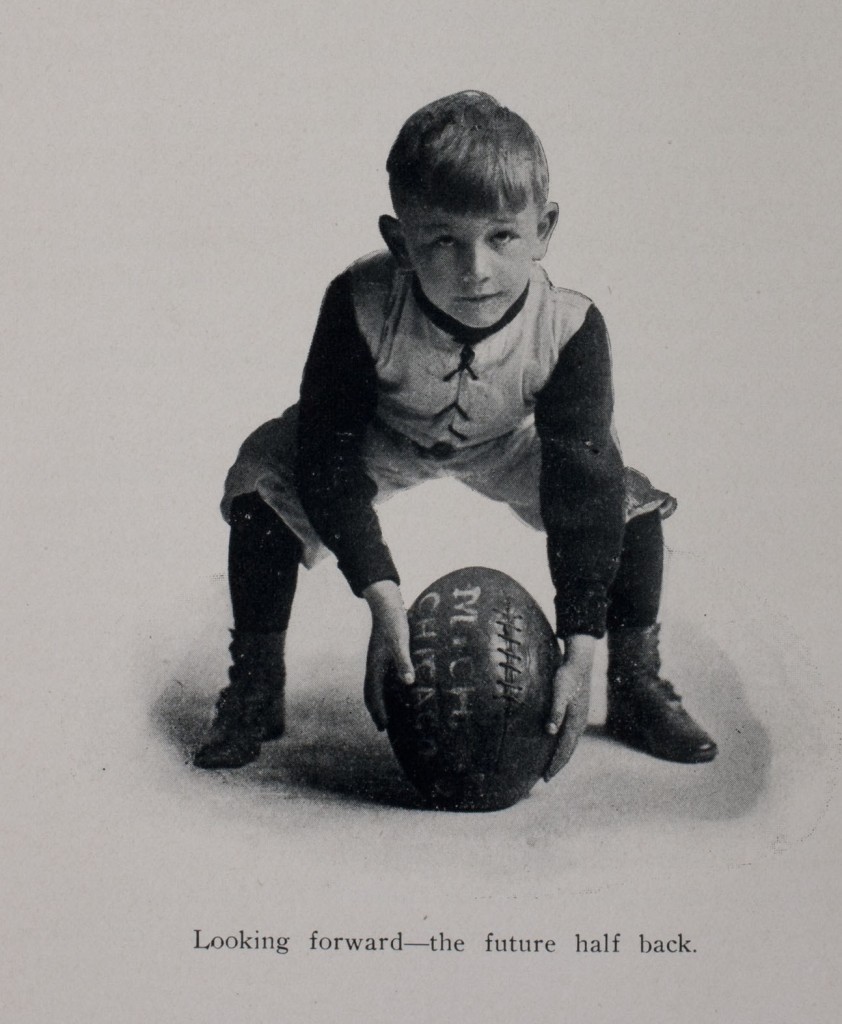
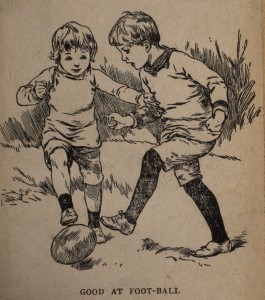
While our variation of the game came from the more collegiate practice, it quickly became a sport known, and played, by children as is illustrated in Farmer Gooding’s Circus by Harriet Putnam published by the McLoughlin brothers ca. 1905 (Figure 10). In the text, Jack and Bart Bailey make short work of mastering the game. Palmer Cox’s famous The Brownies also have a notable, and humorous, attempt at the game in The Brownies Through the Union (1897). Their attempts at American Football are replete with illustrations of piling-on and injuries as they attempt to maneuver their way through the rules of the game (Figures 11, 12, 13).
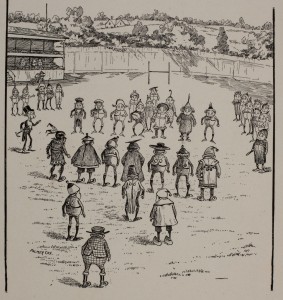
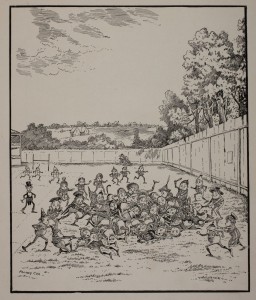

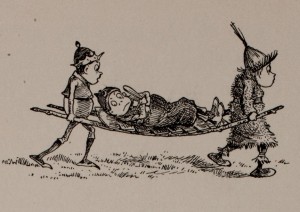
Totes Funny